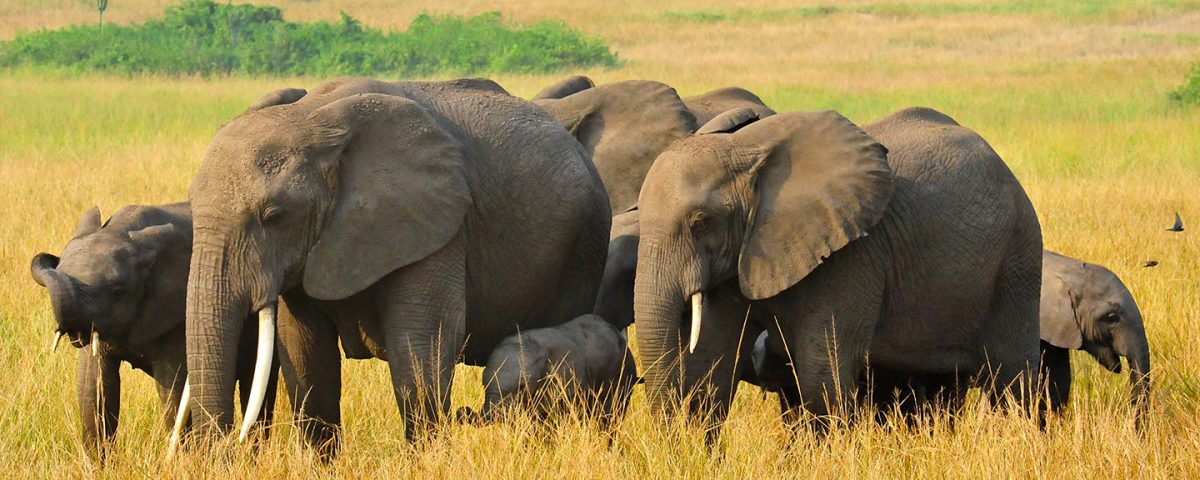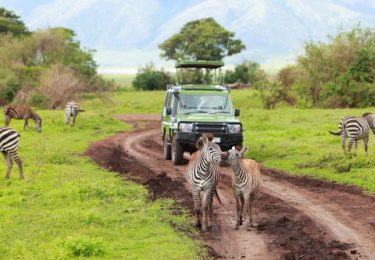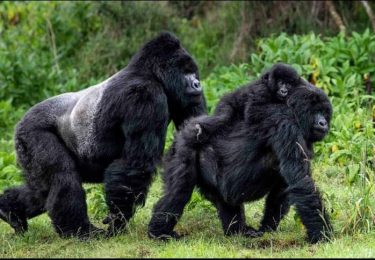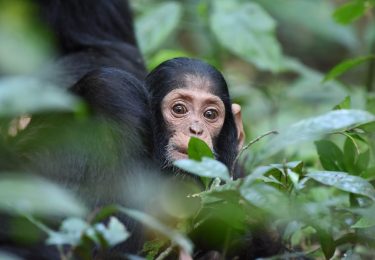- Home
- About Us
- Uganda safaris
- Long Safaris
- Short Safaris
- Day Short Safaris
- 1 Day Entebbe Botanical gardens weekend birding excursion
- I Day Entebbe City Tour
- 1 Day Jinja, Mabira, Ssezibwa Tour
- 1 Day Jinja Source of the Nile tour
- Lake Victoria Sunset Cruises
- 1 Day Kampala City Tour
- 1 Day Mabamba Shoebill Stork And Birding Tour
- 1 Day Makanaga Shoebill And Birding Trip
- 1 Day Ngamba Island Boat And Chimpanzee Excursion
- Other Tours
- Gorilla Safaris
- Uganda Gorilla safaris
- 4 Days Mgahinga Bwindi gorilla and golden monkey trekking safari
- 3 Days Mgahinga Gorilla trekking safari
- 5 Days Mgahinga Gorillas, Golden Monkey And Lake Bunyonyi Tour
- 5 Days Gorillas And Wildlife, L.Mburo, Bwindi and L. Bunyonyi
- 8 Days Wildlife, Gorillas, Golden Monkeys Trip
- 8 Days Gorillas Chimpanzee and wildlife Trekking Tour
- 9 Days Kidepo Valley National park and Bwindi Gorilla Safari. Wildlife and gorillas
- 11 Days Gorilla And Chimpanzee Tracking and wildlife Safari
- Rwanda Gorilla Safaris
- Uganda Gorilla safaris
- National Parks
- Kidepo Safaris
- Queen Elizabath Safaris
- Lake Mburo Safaris
- Mgahinga
- Mgahinga Gorilla National Park
- 3 Days Mgahinga Gorilla trekking safari
- 4 Days Mgahinga Bwindi gorilla and golden monkey trekking safari
- 5 Days Rwand-Uganda Gorilla, Golden Monkey trekking trip
- 5 Days Mgahinga Gorillas, Golden Monkey And Lake Bunyonyi Tour
- 8 Days Wildlife, Gorillas, Golden Monkeys Trip
- Our Blog
- Other Safaris
- Home
- About Us
- Uganda safaris
- Long Safaris
- Short Safaris
- Day Short Safaris
- 1 Day Entebbe Botanical gardens weekend birding excursion
- I Day Entebbe City Tour
- 1 Day Jinja, Mabira, Ssezibwa Tour
- 1 Day Jinja Source of the Nile tour
- Lake Victoria Sunset Cruises
- 1 Day Kampala City Tour
- 1 Day Mabamba Shoebill Stork And Birding Tour
- 1 Day Makanaga Shoebill And Birding Trip
- 1 Day Ngamba Island Boat And Chimpanzee Excursion
- Other Tours
- Gorilla Safaris
- Uganda Gorilla safaris
- 4 Days Mgahinga Bwindi gorilla and golden monkey trekking safari
- 3 Days Mgahinga Gorilla trekking safari
- 5 Days Mgahinga Gorillas, Golden Monkey And Lake Bunyonyi Tour
- 5 Days Gorillas And Wildlife, L.Mburo, Bwindi and L. Bunyonyi
- 8 Days Wildlife, Gorillas, Golden Monkeys Trip
- 8 Days Gorillas Chimpanzee and wildlife Trekking Tour
- 9 Days Kidepo Valley National park and Bwindi Gorilla Safari. Wildlife and gorillas
- 11 Days Gorilla And Chimpanzee Tracking and wildlife Safari
- Rwanda Gorilla Safaris
- Uganda Gorilla safaris
- National Parks
- Kidepo Safaris
- Queen Elizabath Safaris
- Lake Mburo Safaris
- Mgahinga
- Mgahinga Gorilla National Park
- 3 Days Mgahinga Gorilla trekking safari
- 4 Days Mgahinga Bwindi gorilla and golden monkey trekking safari
- 5 Days Rwand-Uganda Gorilla, Golden Monkey trekking trip
- 5 Days Mgahinga Gorillas, Golden Monkey And Lake Bunyonyi Tour
- 8 Days Wildlife, Gorillas, Golden Monkeys Trip
- Our Blog
- Other Safaris
QUEEN ELIZABETH NATIONAL PARK

SEMULIKI NATIONAL PARK
January 23, 2024
KIBALE FOREST NATIONAL PARK
January 23, 2024Queen Elizabeth National Park is located in the western part of Uganda, sharing districts of; Kasese, Rukungiri, Kamwenge and Bushenyi. It lies between Lake Gorge and Lake Albert with the Kazinga channel crossing through its 700 square miles’ land area. The park was founded in 1952 as “Kazinga National Park” but later after two years, it was renamed Queen Elizabeth National Park to commemorate the visit of the Late Queen Elizabeth II of England. In addition to this, Queen Elizabeth National Park is 1978 square kilometers in size and the katwe explosion craters mark its highest point at 1350 meters above sea level, while the lowest point is at Lake Edward and it’s at 910 meters.
The park is an ideal habitat for wildlife due to its diverse ecosystem; sprawling savanna, sparkling lakes, fertile wetlands, shady, humid forests to mention a few. It also comprises of open grassland and savanna which tends to be moist and woody in the west than the eastern parts, thorny acacia dominate this savanna habitant with the high concentration of candelabra shrub a cactus that grows along the Kazinga channel and on the Kasenyi plains.
Besides that, the park’s magnificent vistas include dozens of enormous craters carved dramatically into rolling green hills, panoramic views of the Kazinga channel with its banks lined with hippos, buffalo, elephant and the endless ishasha plains, whose fig trees hide lions ready to attack herds of unsuspecting Uganda kobs.
This savanna and primate park includes the Maramagambo forest which borders Kibale and Virunga national parks. It also consists of crater lakes such as Lake Katwe for salt mining.
Queen Elizabeth National Park is known for its abundant wildlife with over 95 mammal species which includes; the tree climbing lions in the ishasha sector that make the park famous. These lions tend to climb trees due to the weather and this is because they be in search for shelter. Other animals are; leopard, elephant, Uganda kob, topi, buffalo, hippos, warthog, waterbuck, hyena, Nile crocodile, giant forest fog, chimpanzee, sitatunga, mangoose, serval cat, jackal, genial, civet, black and white colobus, L’hoest’s monkey and many others. It’s also a home to over 600 bird species making it the 6th highest diversity in the world and the highest in Africa and this makes it a perfect destination for the bird lovers. Some of the bird species you will encounter include; the rare shoebill stork, Hamerkop, Great white pelicans, Goliath Heron, Great egrets, Little egret, cattle egret, African emerald cuckoo, Black coucal, Black-bee eater, Marabou stork, Yellow billed stork, White-faced whistling, Spur-winged plovers, Squacco heron, Fish eagle, Long tailed cormorants, African Jacana, Yellow backed weaver, African mourning dove, Black headed Gonolek, Yellow wagtail, Yellow throated cuckoo, White winged warbler, Water thick-knee, Papyrus Gonolek, Papyrus canary, Slender-tailed mourning dove, Malachite kingfisher, Pied kingfisher, Lesser masked weaver, Greater flamingo, Jack snipe, Common sand martins, Common Squacco heron, Common snipe, African skimmer, African white-tailed lark, African open-billed stork, African fish eagle, African harrier hawk, Bateleur, African broadbill, Brown snake eagle, Brimstone canary, Saddle billed stork to mention a few.
Besides the outstanding wildlife attractions, the park has a fascinating cultural history which will give our tourists opportunities to meet the local communities and engage in some of their activities such as storytelling, dancing, singing, games, and more. These surrounding communities have benefited from the national park being gazetted because the ecosystem has been conserved.
Queen Elizabeth National Park has got five sectors and each with its activities; the ishasha sector located in the southwestern part of the park well known for the tree climbing lions, Kasenyi plains in the northeastern for the boat cruise and game drives because of its open grassland, Kyambura gorge in the eastern part for chimpanzee tracking, maramagambo forest in the southern part for nature walks and lastly the Mweya Peninsula located in the northern part of the park and it’s for mongoose trekking. Mweya peninsular is also known as “the heart of Queen Elizabeth National Park” due to the headquarters and the airstrip being located here.
ACTIVITIES TO DO WHILE IN THE PARK
Game drives
Queen Elizabeth National Park has got three (3) game drives; morning, evening and night game drives. While on these game drives, expect to come across a number of birds and mammal species depending on what nature is willing to offer such as lion, leopard, buffalo, elephant, topi, Uganda kob, warthog, hippos, waterbuck and many more.
Nature walks
This activity is carried out in the maramagambo forest; this forest has got caves which are a home to both bats and pythons. While in this forest, tourists will come across a number of tree species, mammal species not forgetting the bird species for the bird lovers.
Launch cruise
The park has got two sessions; the morning and afternoon seasons. While here, expect to come across a number of bird species water animals such as hippos, elephant and crocodiles as well as other animals at the banks that come to quench their thirst.
Bird watching
Queen Elizabeth National Park has the most number of bird species (over 600) compared to other parks. These birds include; the Grey crowned crane, kingfishers, flamingo, pelican, lapwing, Red-chested sunbird, White-faced whistling, Spur-winged plovers, Squacco heron, Fish eagle, Long tailed cormorants, African Jacana, Yellow backed weaver, African mourning dove, Black headed Gonolek, to mention a few. So, don’t forget your cameras and binoculars to capture memories to take back home.
Lion tracking
This activity is only done in Queen Elizabeth National Park and it’s what makes it famous besides the tree climbing lions. You will find the lions with tags and these tags help the rangers to communicate and also know where the lions are or spent their nights. Lion tracking is mostly done by researchers; tourists are divided in a group of four (4) people and given 1-4 hours to spend with the lions.
Chimpanzee tracking
Queen Elizabeth National Park is one of the national parks in Uganda where one can do chimpanzee tracking. This activity is carried out in the Kyambura gorge located in the eastern parts of the park and it starts at 8:30am at the park headquarters.
A visit to the Katwe Salt Lake
People living around katwe town extract salt from the saline lake katwe using evaporation pans since the 14th century. A local guide will lead our tourists to the crater lake in order to see the process of salt extraction. This activity will leave you wondering and also give you great memories to take back home.
BEST TIME TO VISIT THE PARK
Queen Elizabeth National Park can be visited throughout the year but the best time to visit is during the dry season between the months of December to February and from June to September after the rains have stopped and the park is still green but not muddy.
HOW TO GET TO THE PARK
By road
Queen Elizabeth National Park can be accessed from Kampala passing through Masaka-Mbarara-Kasese which is approximately 389 kilometers or from Kampala passing through Mityana-Fort portal-Kasese and its approximately a 6 hours’ journey.
By air
Access Queen Elizabeth National Park from Entebbe International Airport or any of the airstrips along Entebbe road using scheduled/charter flights and these land inside the park at Mweya airstrips





